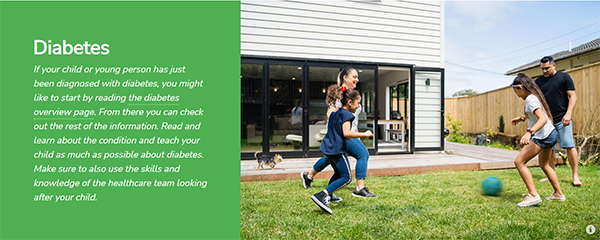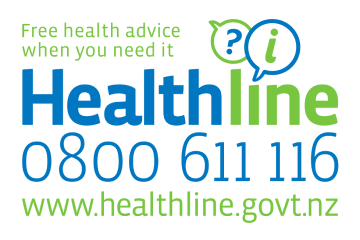Giving Insulin To Children With Diabetes
Giving Insulin To Children With Diabetes
Children and young people with type 1 diabetes mellitus need insulin therapy to replace the insulin that the body can no longer produce. Children and young people with type 2 diabetes may also need insulin.
Key points about diabetes treatment
- children and young people with type 1 diabetes need insulin therapy to replace the insulin that the body can no longer produce
- insulin action and duration varies according to insulin type
- you can give insulin by injection by syringe, or a pen device, or by an insulin pump into the layer of fat under the skin
What are the insulin basics?
You need a healthy food plan and regular intake of carbohydrate to balance with insulin by injection or insulin pump.
Children and young people with type 1 diabetes mellitus need insulin therapy to replace the insulin that the body can no longer produce. Children and young people with type 2 diabetes may also need insulin. You can give insulin by injection using a syringe, or a pen device, or by an insulin pump into the layer of fat under the skin (called the subcutaneous layer).
You need a healthy food plan and regular intake of carbohydrate to balance with insulin by injection or insulin pump.
What are the different types of insulin?
Insulin action and duration varies according to insulin type. The most common insulin types for children and young people in Aotearoa are rapid acting insulin and long acting insulin analogues.
Rapid acting insulin
Rapid acting insulins include:
- Novorapid
- Humalog
- Apidra
Ideally, give rapid acting insulins 15 minutes before eating. They tend to last between 2 and 4 hours. They are clear in appearance.
Long acting insulin analogues
Long acting insulin analogues include:
- Lantus (glargine)
- Levermir (detemir)
You take long acting insulin analogues either once or twice a day to provide background 'basal' insulin. You combine them with rapid acting insulin. They are clear in appearance.
Other insulins
There are other types of insulin available in Aotearoa. But, they are not used as often for children and young people. Your diabetes team will talk to you if your child needs these.
These other insulins include:
- short-acting insulin (peak action of 2 to 4 hours)
- intermediate acting insulins (their peak activity is between 4 and 12 hours but can last up to 24 hours)
- mixed insulins (which are combination of intermediate and rapid or short acting insulin)
How do I store insulin?
You can keep insulin that has been opened for use at room temperature. Injections are more comfortable if the insulin is not cold.
Unopened vials and cartridges
Store unopened vials and cartridges of insulin in the fridge between 2 and 8 degrees Celsius until their date of expiry.
Opened vials and cartridges
You can store opened vials and cartridges of insulin at room temperature for 4 weeks. If you store opened insulin in the fridge, allow 15 to 20 minutes for it to come up to room temperature before using.
Where on my child's body do I inject insulin?
Insulin needles are very small as you only need to inject insulin into the layer of fat under the skin (subcutaneously). Once injected, the insulin goes into the blood.
Main parts of the body to safely inject insulin
The main parts of the body where children and young people can safely inject insulin are the stomach, and the upper, outer areas of the buttocks. The abdomen provides the fastest and most consistent rate of insulin absorption and is less affected by exercise than other sites. You can also use the fronts or sides of the thighs but these are less commonly used in children.
Buttocks often best for a younger child or baby, or a child who has lost a lot of weight
If your child has lost a lot of weight before their diabetes diagnosis, it is often best to inject into their buttocks. This is to make sure the injections are going into the fat layer and not the muscle layer. Injecting into buttocks is also often best if you have a younger child or baby.
Lipohypertrophy is an abnormal accumulation of fat underneath the surface of the skin. It is a common problem when insulin is repeatedly injected into the same area and affects insulin absorption. You can avoid lipohypertrophy by rotating the injection sites.
How do I administer my child's insulin?
Wash hands
It is important to remember to wash hands to remove dirt or germs before injecting insulin.
Preparation varies according to your child's age and stage of development
Preparation for insulin injections will vary according to your child's age and stage of development. Young children, for example, may need distraction with bubbles.
Supervision is important
Children may learn to do their own injections under close supervision. While young people with diabetes may take some initiative with managing their insulin, it is important that adult caregivers continue to support them. The caregiver continues to play the main role in managing the health and wellbeing of a young person with diabetes until at least their 16th birthday.
Slight bleeding and bruising will happen sometimes
Slight bleeding and bruising will happen sometimes because the needle has passed through a tiny blood vessel. This should not affect the absorption of the insulin but may cause stinging at the time of the injection.
Encourage your child to use various areas of the body for injections from the time of diagnosis
Insulin injections should cause minimal discomfort. But, injections not given deeply enough into the fat layer may cause pain. Insulin given too deeply may go into the muscle which may also cause pain. Children who get used to having injections in the same area may complain that injections are more painful when they move sites. You can avoid this by encouraging your child to use various areas of the body from the time of diagnosis.
Talk to your specialist diabetes team
Please talk to your specialist diabetes team about a guideline for the safe administration of insulin for your child. This is because the administration technique may need to change as your child grows older and gets bigger.
Dispose of needles safely
You need to dispose of all needles in an approved container. Your diabetes team can tell you how to do this in your area
What about the administration of insulin using a pump device?
An insulin pump constantly delivers basal insulin
An insulin pump constantly delivers basal insulin according to preprogrammed doses stored within the pump. By pressing buttons on the pump, you can adjust these programmes for different times of the day or during periods of increased activity, to deliver more or less basal insulin as required.
The pump also delivers preprogrammed bolus doses of insulin
The pump also delivers preprogrammed bolus doses of insulin when your child eats carbohydrate food or when the blood glucose levels are high. Pressing buttons on the pump also delivers these bolus doses.
Delivering the insulin
The insulin within the main pump unit is stored within an insulin reservoir. The reservoir connects to a thin piece of tubing. This tubing connects to a cannula inserted into the subcutaneous layer of fat, generally in the abdomen or buttock.
Look at blood glucose trends regularly
People using insulin pumps need to regularly look at blood glucose trends (minimum of 6 blood glucose tests each day) to work out if programmed insulin doses for both the basal and the bolus insulin are adequately meeting their needs.
Closed loop technology
Pumps can increasingly interact with continuous glucose monitoring devices adn increase or decrease the basal insulin in response to rising or falling glucose levels. Used in this way, both pump options available in New Zealand can help prevent hypoglycaemia and hyperglycaemia.
Local diabetes teams provide specialised training and education
Families of children and young people considering insulin pump therapy as a treatment option need specialised training and education. Local diabetes teams provide this.
Who can get public funding for pump therapy?
There are also specific criteria within New Zealand for who can get public funding for pump therapy. If you are considering pump therapy for your child or young person, talk to your local diabetes team about whether you can get funding.
What if the pump fails?
Pumps can sometimes fail (like all technology). It's important to know what to do. The Clinical Network for Children and Young People with Diabetes have developed a guide so you can independently go back to injections if you need to.
See the pump failure guide (PDF, 1.24 MB).
See more KidsHealth content on diabetes
This page last reviewed 22 August 2023.
Do you have any feedback for KidsHealth?
If you have any feedback about the KidsHealth website, or have a suggestion for new content, please get in touch with us.
Email us now
